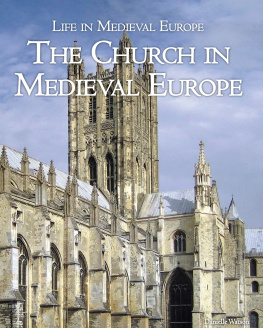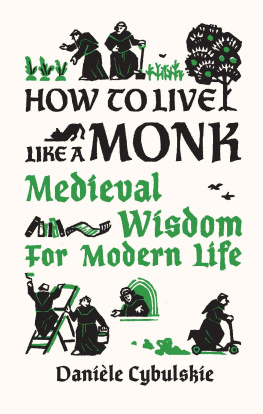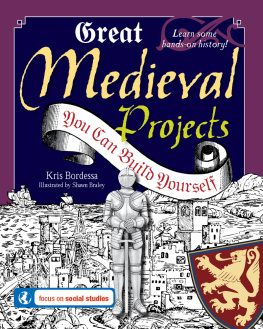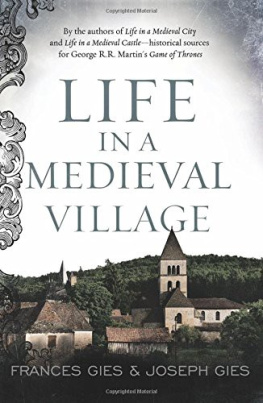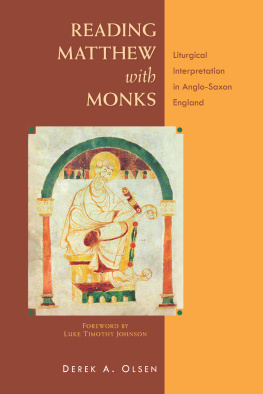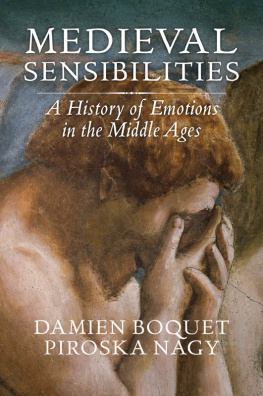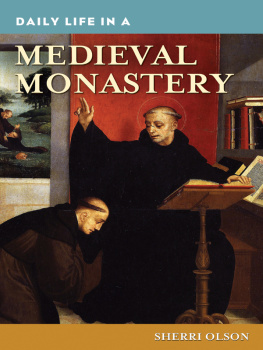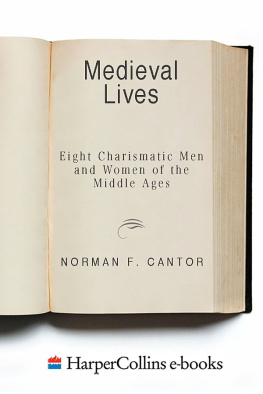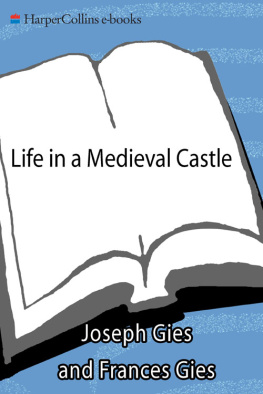
For Simone
Contents
I am indebted to a number of people for their help and support in the preparation of this book. In 2001 I had the good fortune to join the Cistercians in Yorkshire Project at the University of Sheffield, directed by Professor Sarah Foot. This was an opportunity to work with experts from a wide range of disciplines, to develop my understanding of the Cistercian Order and, under Sarahs guidance, to shake off the rather turgid style of a doctoral student and write more freely for a diverse readership. I am grateful to my parents, Betty and Bob, who have taken an avid interest in this as in all my monastic enterprises, and to my nephew and niece, Jamie and Katie, who offered their thoughts on the illustrations with great enthusiasm. My husband, Haki Antonsson, a fellow medievalist, has been a patient listener and a willing reader who has supported and advised me throughout the venture. My greatest thanks are to Dr Simone C. Macdougall who introduced me to the world of the medieval cloister as an undergraduate of the University of St Andrews and whose passion and knowledge has since nurtured my love for the subject. Simone was instrumental in the conception, planning and writing of this book, offering guidance, inspiration and a fund of quirky anecdotes. Simones comments on the manuscript and suggestions for improving the text have been invaluable; without her this book would certainly never have been written. Finally, I would like to thank Michael Greenwood and Eva Osborne of Continuum for their advice and enduring patience.
CS Camden Society
ns new series
PL Patrologia Cursus Completus, Series Latina, ed. J. P. Migne et al., 221 vols (Paris, 184464)
RS Rolls Series
SS Surtees Society
Leave your body at the door; here in the kingdom of souls the flesh has nothing more to do with it.
This study aims to offer an insight into the daily life of the medieval monk; to explore what it really meant for the men and women who entered the monastery to take vows of poverty, obedience and chastity and subject themselves to the silence and austerities of the cloister. How did they cope with the transition to this highly regimented way of life that required them to sever links with the outside world and exercise humility and self-abnegation? How difficult was it to adjust to the confinement and lack of privacy, and was there scope for them to forge personal friendships and ties within the cloister? These and other questions are explored to understand more clearly the medieval monks experience of claustral life.
Previous studies of monasticism have examined the monks personal writings and also legislative works to consider the organizational structure of the various religious orders, their ideals and key individuals within the monastic movement. This diverse body of sources includes letter collections, chronicles, biographies, books of customs (customaries) that record liturgical and administrative arrangements in the monastery and visitation reports that were intended to regularize monastic observance. Here, by contrast, these same sources are used to evoke the reality of everyday life in the monastery, to explore the trials and tribulations experienced by the brethren, the transgressions they committed, the physical and mental impact of claustral life as well as relationships both within and outside the monastery. The analysis is Europe-wide but with a special interest in the British Isles and a particular focus on the late eleventh to the sixteenth centuries.
An overview of monasticism, charting its origins, evolution and defining features offers an introduction to the key monastic Orders, namely the Benedictines, Cluniacs, Cistercians and Carthusians, with some attention accorded to female religious, for while the nuns way of life might differ from that of their male The Military Orders (Knights Templar and Knights Hospitaller) that developed as part of the Crusading movement and the Mendicant Orders that emerged in the thirteenth century fall outside the scope of this study.
This survey of medieval monasticism is continued with a brief outline of the monastic precinct, the people who made up the community or were in some way associated with the monastery, and the daily routine in the cloister, thereby establishing the physical context, personnel and daily rhythm of monastic existence. Subsequent chapters reveal that the monks life was demanding if rewarding. Most found the dietary restrictions, the cold and lack of sleep particularly challenging. One monks craving for wine was so great it caused him to hallucinate and see wine cups in the choir; another gnawed wood thinking it was meat. Concessions might be granted to ease the hardships and in some northern countries the monks were given special dispensation to wear caps in church to combat the cold; others were excused from processing barefoot. The obligation to rise each night to celebrate Vigils in the church was perhaps the most gruelling aspect of claustral life, especially for newcomers, but some found that chewing on a peppercorn during the Office prevented them from nodding off. The austerities of the cloister could have a considerable impact on the monks physical and mental well-being. Fasting and abstinence meant that stomach problems were not uncommon while back strain might be caused by ringing heavy bells. Antipathy and depression could strike those who missed their family, friends and the delights of the world, prompting them to consider leaving the monastery or, in extreme cases, to contemplate suicide. It was thus important to keep the monks in good health and high spirits; while the routine bloodletting sessions were believed to prevent sickness, fresh air, exercise and a break from the confinement of the cloister were often recommended to dispel gloominess and torpor.
It was vital that the cloister was preserved as a place of contemplation and that silence was observed here so that the monks could read, meditate and advance on the path to Truth and Understanding. Accordingly, restrictions were imposed on speech, and essential communication was made by signing. Newcomers had therefore to learn the communitys system of sign language but were warned that this was only to be used when necessary. The silence of the cloister was, however, relative. Bells sounded throughout the day to summon the monks to the church or refectory, there was often the noise of workmen carrying out construction or repairs, and the sound of animals in the outer court of the precinct or even in the claustral area. The monks of Bury St Edmunds (Suffolk) raised a billy goat that would cavort around the cloister and wander into the church; elsewhere there were lapdogs, monkeys and even sheep.
Daily life in the monastery was strictly regulated but on occasion this routine was interrupted by the arrival of a visiting dignitary, by storms or even intruders. The monks of Meaux Abbey were blown out of their choir stalls when an earthquake hit Yorkshire in 1349, while the Palm Sunday procession at m Abbey, Denmark, was brought to an abrupt standstill in the late twelfth century when local women stripped down to their underwear before the monks. The night could be equally eventful and even fearful. The communal sleeping arrangements meant that the monks might be disturbed by the snores or cries of their companions. Their slumbers might also be disrupted by the appearance of a saint come to chasten or to cure or, conversely, by the devil seeking to lead the monks into temptation. He might take on any number of guises to succeed in this malevolence, appearing as a black crow, a raving hound or even an alluring maiden. In the dark and quiet of the night the monk was vulnerable to his own worries and anxieties. Consequently, insomnia was not uncommon in the medieval monastery and was not taken lightly various remedies were prescribed to combat sleeplessness.
Next page

